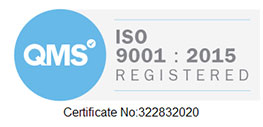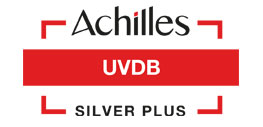This is a short post about the key ideas of 11kV design practices. In the UK, 11kV is the standard secondary distribution voltage (a few places have 6.6kV – and this can be thought if as almost identical for design approaches) – the reason for this, is that it allows transmission of a fairly large amount of energy, but is easy to handle and manipulate without needing specialist equipment and design approaches.
For this reason, most design engineers will encounter 11kV reasonably often, whether it is in the form of a simple 11kV ring main unit supplying a site or a more complex large 2-bus-section main switchboard. When looking at 11kV design, part of the challenge is deciphering what equipment is needed and what level of technology is required. Ring Main Units (RMUs) are very cheap and simple devices, which can be suitable for many applications – but when faced with more complex systems, their lack of adaptability can be a major problem.
So, if a designer is considering an 11kV design, what issues do they need to think about?
- What level of protection and control does the system need? Are simple manual switches with basic IDMT relays ok, or will there be remote switching and large MV motors or generators?
- What is the service? Will the switchgear be operated frequently, or energised occasionally and ‘forgotten’? For frequently operated switchgear such as for motors, the use of withdrawable pattern design is preferable as this facilitates maintenance and operation, for equipment left in service for a long time, fixed pattern is often best.
- Redundancy – use of ring main systems, radial feeders, or parallel redundant feeders
- Cost – will an RMU be sufficient or is a more expensive panel type design needed!
- What fault rating and continuous current rating is needed for the switchboard?
- What protection relays are needed and what ratio CTs are required? Are any VTs needed?
- Does the switchboard need under-voltage relays on the incomers, or an auto-changeover facility?
- Does the design need to be arc-resistant – if so to what level?
- Will the cables enter the switchgear from the top or bottom?
- What size cables are needed, and is there space to bend and terminate them?
- How will the auxiliary AC & DC power supplies be provided? Would the use of self-powered relays be worth considering?
- Does the switchgear need to inter-trip or interlock with any upstream or downstream systems?
- Do the protection relays need any specific communication protocol or interface to a remote SCADA system?
- What are the interface points to the DNO, or other 3rd parties?
The above may seem like a long list of questions, but working through them in order will help the 11kV design progress and become defined. Usually during the initial design stages the design engineer will begin preparing a ‘Protection’ Single Line Diagram, which shows all of the key elements. Theses drawings then become critical in helping define the system and informing the switchgear manufacturer of what is required.
As always, if you would like to discuss your project. Please get in touch and let us help!



